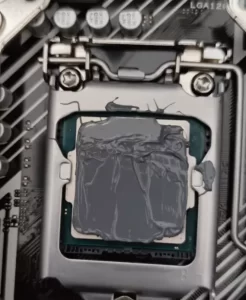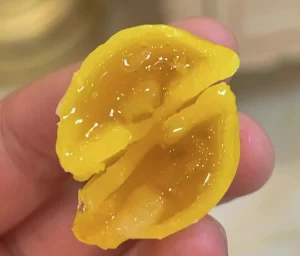No, dielectric grease cannot work as a thermal paste. So, what is the best thermal paste alternative? You can use toothpaste as the best alternative. The other alternative available is hair wax.
You should not use dielectric grease as the thermal paste alternative. The reason is that it is non-conductive. Also, it tends to be runny at the temperature of your CPU. When you use dielectric grease, it can turn messy.
Will Dielectric Grease Work as Thermal Paste?

No, dielectric grease cannot work as a thermal paste. It is a silicone-based grease. It is indeed used in an electric circuit. Dielectric grease is used for safeguarding components from corrosion, moisture and dirt. It is otherwise called silicone grease.
You cannot use it as a thermal paste for the following reasons:
- It is a non-conductive material
- Dielectric grease is used in electric circuits to transfer heat
- It is otherwise called silicone grease
- Dielectric grease is waterproof
- It is made by bringing together a thickener and silicone oil
- Dielectric grease is an insulator
- It prevents the flow of current
- Dielectric grease cannot allow you to establish an electric connection between two components.
- It can be used only in spaces where the current does not pass
Dielectric grease vs Thermal paste
Dielectric grease and thermal paste are both substances used in various electrical and mechanical applications, but they serve different purposes and are not interchangeable. Here’s a quick rundown of their primary differences:
Dielectric Grease
Purpose:
- Primarily used as an insulator and protector against moisture, dust, and other environmental hazards.
Composition:
- Usually silicone-based.
Electrical Conductivity:
- Non-conductive, designed to insulate electrical connections.
Typical Applications:
- Sealing electrical connectors, protecting battery terminals, and keeping moisture out of electrical connections.
Temperature Range:
- Effective over a broad temperature range but not specifically designed for thermal conductivity.
Physical State:
- Usually a thicker, more viscous material compared to thermal paste.
Thermal Paste
Purpose:
- Primarily used to improve thermal conductivity between two surfaces, usually a CPU/GPU and a heatsink.
Composition:
- Varies, but commonly made from a compound of silver, ceramic, or metal oxides mixed in with silicone.
Electrical Conductivity:
- Some are electrically conductive and some are not, depending on the material used. Care should be taken not to apply conductive thermal paste on electrical pins or circuits.
Typical Applications:
- Between a CPU and its heatsink, GPU and its cooler, or any other places where improved heat transfer is needed.
Temperature Range:
- Designed to maintain its properties over a wide temperature range, specifically for high-heat applications.
Physical State:
- Typically less viscous than dielectric grease for easier spreading between surfaces.
So now, you know why you cannot use dielectric grease as thermal paste. What can be used will be your question. Here is the answer:
Thermal Paste Alternative
Toothpaste is the best thermal paste alternative. It holds the top position among the other alternatives available. Here is the list of alternatives available for dielectric grease:
- Yellow cheese
- Paper
- Banana
- Moisturizing cream
- Butter
All these items were tested as alternatives to dielectric grease. Of them, hair wax and toothpaste turned out to be the best. The reason is that these two alternatives exhibited a comparatively low temperature. Most importantly, they did it without entirely cracking or drying out.
Beeswax As a Thermal Paste Substitute

Apart from the list mentioned above, beeswax is yet another thermal paste substitute. However, when you use this alternative, you will have to remember certain things mentioned below:
- Beeswax can work only for a few days
- So, you can use it for a short period until you buy thermal paste
- After a few days, beeswax turns brittle
- It can break easily. If possible, you can try stabilizing it
- Remember to use pure and solid beeswax for thermal conductivity
- Do not use any products that contain only a small percentage of beeswax.
How To Use Toothpaste as Thermal Paste?
You cannot directly add toothpaste as thermal paste. You should use toothpaste with Vaseline in an 80:20 ratio. The reason is that the structure of toothpaste decays after a few days. This happens particularly when the operating temperature of your CPU is high.
- Vaseline grease will prevent the toothpaste from drying
- Take a syringe and fill it with the mixture of toothpaste and Vaseline
- Make sure that you take them in the proportion of 80:20
- Press the syringe evenly to apply a thin layer on the CPU
- You can also apply it on the heat sink on the contact side.
- This thermal paste will work only for around 3-4 months.
- However, you can achieve better control by replacing it every 15-30 days.
- When you remove this paste, you might see tiny spots on the metal.
- You can remove these stains with the help of cotton wool dipped in a 90% alcohol solution.
- You can reapply the paste now.
Remember that not all toothpaste can turn out to be an alternative. The reason is that some possess higher thermal conductivity, while others do not. When you use toothpaste, you will have to evaluate the following factors:
- Electrical illusion
- Ability to handle microsurface imperfections
- Considerable operating time before it expires
- Consistency in different operating temperatures
- Adhesion strength to metal surfaces
If you do not have a syringe. You can also apply the toothpaste and Vaseline mixture using an old credit card. It will help you apply the paste evenly.
Do You Need Thermal Paste For CPU?
Yes, every CPU cooler requires thermal paste. However, many come with pre-applied paste. In this case, your job will become easier. How to find out whether it is pre-applied?
- Check the base of the bottom plate or water block of your CPU cooler.
- You can find it attached to the CPU
- If you find a silver paste over there, you need not have to add it anymore.
- You can start the installation process straight away.
You may also like: Can Thermal Paste Harm the Processor?
How Much Is Thermal Paste?
You will have to pay less than $10 to buy it. Thermal paste will not cost you more. Some of them come with cleaning wipes. Some even come with a spatula for easy application. Also, most pastes come in syringe form to make the application easier.
You may also like: How Much Thermal Paste For My Gaming Laptop’s CPU or GPU?
Can I Use Aluminum Foil as Thermal Paste?
No, you cannot use aluminum foil as a thermal paste. The reason is that thermal paste should be used for filling tiny gaps between surfaces.
Indeed, aluminum can do it for you. Nevertheless, you will have to exert much pressure to fill gaps when using aluminum foil. But the pressure should be more than what your processor can handle. So, it is better to avoid using aluminum foil as a thermal paste.
Is Heat Sink Compound and Thermal Paste the Same?
Yes, heat sink compound is the other name used for thermal paste. It is called by other names like:
- Thermal interface material
- Heat sink paste
- Heat paste
- CPU Grease
- Thermal compound
- Thermal grease
It is a sticky paste. This paste is used as an interface between heat sources, heat sinks and CPU. It is often made by combining silicone and zinc oxide. It is known for its high thermal conductivity.
Can I Use Silicone Instead of Thermal Paste?
No, you cannot use silicone instead of thermal paste. It is a non-conductive material. So, you cannot use it as a thermal paste.
Vaseline as Thermal Paste
You cannot use Vaseline alone as a thermal paste. However, you can use it in combination with toothpaste or aluminum powder. Vaseline can prevent these thermal paste alternatives from drying out.
Conclusion
In short, you cannot use dielectric grease as a thermal paste. Rather, you can use other homemade solutions as alternatives. But, make sure that they meet the following temperature ranges:
- Less than 600C
- Between 60 and 800C
- Between 60 and 1000C
- More than 1000
